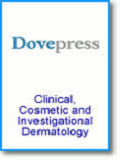
Authors: Marco A Rocha and Ediléia Bagatin.
Abstract
Acne is a multifactorial and inflammatory disease of pilosebaceous follicles, which affects most adolescents. Recent epidemiological data revealed a difference in adults affected by this disease. Women have a high prevalence and incidence when compared with men, especially after 25 years of age. In contrast to what was initially thought, most of these patients do not present endocrinopathy capable of leading to the development of the lesions. When present, polycystic ovarian syndrome is the main cause. However, in these cases, acne is rarely the only dermatological manifestation; hirsutism and acanthosis nigricans are often present. The majority of the normoandrogenic acne patients present a history since adolescence, but in many cases the lesion distribution and intensity change with time. There is often a typical localization of the lesions in the lower third of the face and lateral region of the neck. Another interesting feature is related to the impact on quality of life (QoL), which is always intense. Often there are signs of depression, even when the lesions are mild. As most adult patients are women, in addition to the conventional options, there is also hormone treatment. Combined oral contraceptives and spironolactone are good options. Knowing more about the particularities in etiopathogenesis, impact on QoL, and specific treatment options is important to all dermatologists who face the challenge of treating acne in adults.
DOI: https://doi.org/10.2147/CCID.S137794